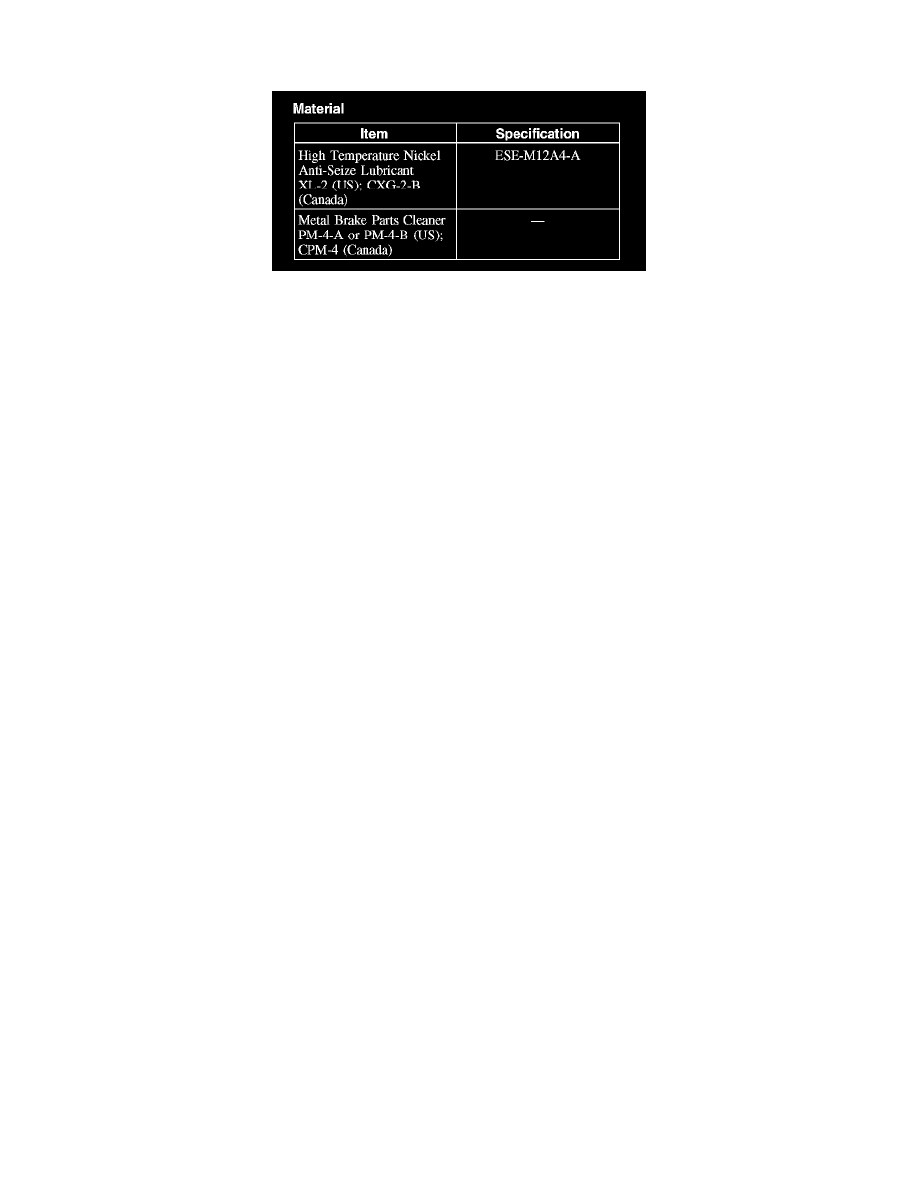F 150 4WD V8-5.4L VIN V Flex Fuel (2007)

Brake Rotor/Disc: Procedures
Brake Disc Machining
Material
CAUTION: Do not use a bench lathe to machine the brake discs.
NOTE: Read the entire operating manual and view the video shipped with the lathe before installing, operating or repairing the lathe.
NOTE: If the thickness of the brake disc is less than the minimum thickness to machine specification, install a new brake disc. This will make sure that
the brake disc will be above minimum thickness after machining.
NOTE: Do not machine new brake discs.
NOTE: Lateral runout and disc thickness variation measurements are not required because correct adjustment of the on-vehicle brake lathe will make
sure that these dimensions are within specifications.
1. NOTE: It is not necessary to disconnect the brake line from the brake caliper.
Position the brake caliper and brake caliper anchor bracket aside.
2. For vehicles with a 2-piece brake disc and hub assembly:
1
Mark the brake disc and the wheel stud for correct indexing during re-assembly.
2
Remove the brake disc from the hub.
3
CAUTION: Do not use an abrasive sanding disc since it will remove paint or other protective finishes from the wheel or metal from the
mounting surfaces, adversely affecting corrosion protection and brake disc lateral runout.
Remove corrosion from the wheel mounting surface, both disc mounting surfaces and hub mounting surface.
4
Align the match marks and install the brake disc on the hub.
3. Machine the brake disc using an on-vehicle brake lathe.
1
Install the hub adapter and silencer belt if necessary.
2
Install the cutting lathe.
3
If the lathe is not self adjusting, adjust the lathe oscillation using a dial indicator. Total indicated reading (TIR) target is 0.000 mm (0.000
inch), maximum is 0.08 mm (0.003 inch).
4
Center the cutting head, adjust the cutting bits and install the chip deflector.
5
NOTE: The depth of cut should be between 0.10 and 0.20 mm (0.004 and 0.008 inch). Lighter cuts will cause the bit to heat up and wear
faster. Heavier cuts will cause poor brake disc surface finish.
Machine the brake disc.
6
Remove the lathe and, if installed, the silencer belt.
7
Remove the hub adapter.
4. Remove the metal shavings.
5. For vehicles with a 2-piece brake disc and hub assembly:
1
Remove the brake disc from the hub.
2
Remove metal shavings from the hub, the brake disc mounting surfaces and from the ABS sensors.
3
Apply anti-seize lubricant to the hub mounting surface to prevent corrosion.
4
Align the match marks and install the brake disc on the hub.
6. NOTE: It is not required to install new brake pads if friction material properties are within guidelines.
Install the brake caliper and brake caliper anchor bracket.
